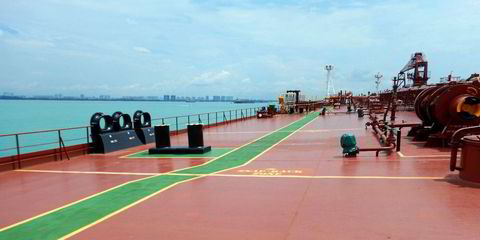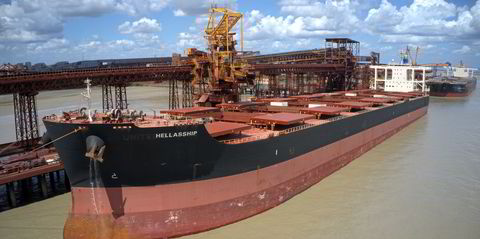LNG shipowners could experience a softer short-term charter market in mid-2020 and are likely to see increasing volatility in rates as the industry adapts to an evolving market, according to Howe Robinson Partners senior broker Bruce Moore.
Moore said the market may see some softening over the next few years as ship numbers, some of them speculative, come onstream in advance of supply, particularly given decline production from some of the older gasfields supplying liquefaction projects.
Speaking at the CWC World LNG Summit in Rome, Moore said the market should prove “broadly profitable” for owners over the next couple of years.
But he added: “I do worry about summer next year. I think it may become lean times in the short-term shipping market.”
Moore said the industry is seeing more volatility now in short-term charter rates as the proportion of short-term fixtures and trading opportunities rise.
He said the new long-term in chartering is now around seven years. He termed “an appropriate rate” that gives a modest return for shipowners would seem to around high $60,000 per day range or $70,000 per day, given prevailing operating costs on a $190m to $200m asset.
Competitive financing is proving difficult to secure so the sector is seeing increasing creativity from shipowners in how they finance their ships, he said.
Capacity constraints unlikely
Moore, who has experience of LNG newbuilding business from his former role at BP Shipping, said he does not see any capacity constraints at shipyards for LNG carrier construction, even given some of the large newbuilding projects in the pipeline like those for Qatar and the Mozambique projects.
He said there is capacity for around 70 LNG carriers across the South Korean and Chinese shipyards with more available in Japan.
LNG ships don’t last forever but sometimes they seem to
Bruce Moore
Moore said shipbuilding prices have been relatively stable for the last few months and look set to remain so.
While there may well be pressure from more LNG orders, he said the lack of newbuilding activity from other shipping sectors has helped hold prices steady.
Moore told delegates that over the last 20 years, the LNG carrier fleet has expanded by around 11% per year in line with the rapid expansion of the LNG industry. He said this is “pretty much unheard of" in terms of other classes of trading ships.
He said the fleet currently numbers over 600 vessels with an orderbook of about 140 ships, or around 23% of the current fleet.
The Howe Robinson broker detailed that 44 ships are due for delivery next year, and 40 more in the following year, with more outstanding options remaining to be declared.
He said upwards of 40 ships on the orderbook which have been built speculatively and will be looking for charters.
Moore said more ships will be needed but timing of the delivery of those ships with the supply of cargoes will be key as they do not always match.
“LNG ships don’t last forever, but sometimes they seem to,” he added, explaining how few LNG carriers are scrapped. But he said there are over 70 older ships which could be used as conversion candidates for other business.
The LNG carrier sector is also not seeing asset flexibility, Moore said, with few ships being bought and sold making valuation difficult to determine. “It would be good to see some more resales to get greater transparency,” he added.







